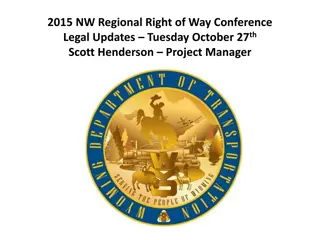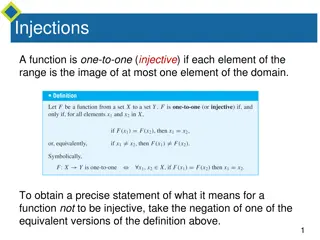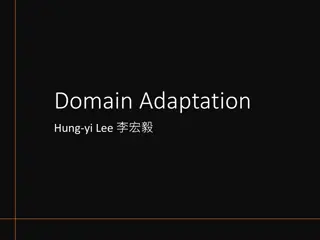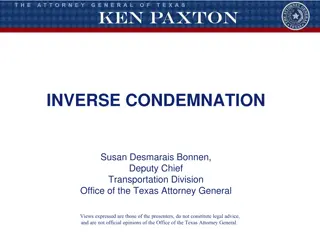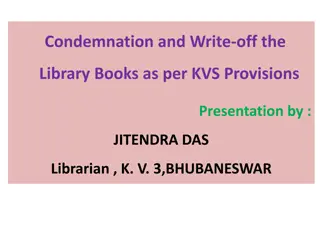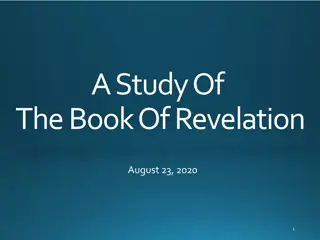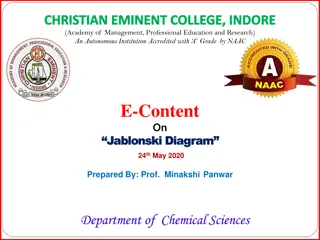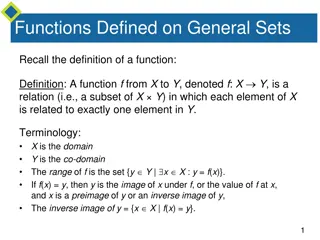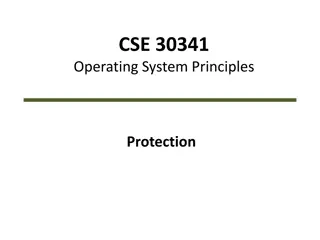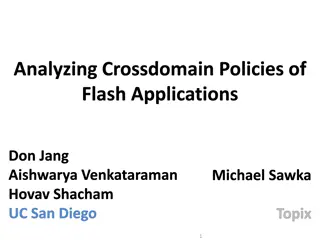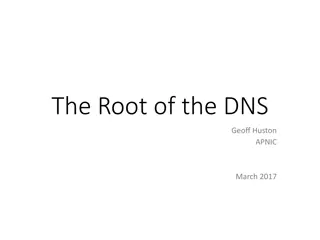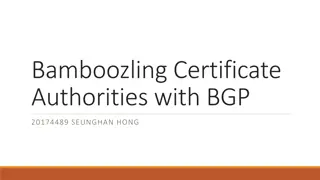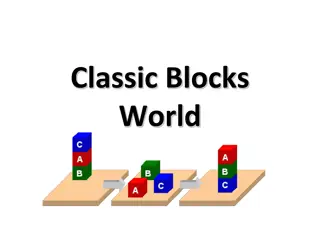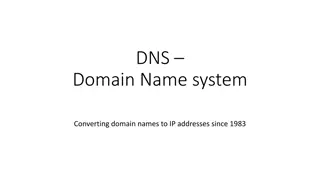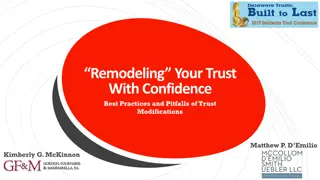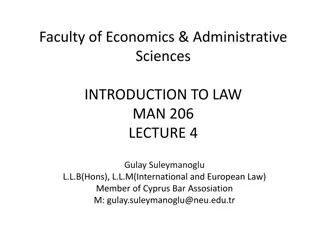Understanding Condemnation Pitfalls in Eminent Domain Law
Explore the key aspects of condemnation and eminent domain laws, including historical foundations, constitutional rights, statutory enactments, procedural steps, and the importance of fair compensation for property owners. Learn about the complexities involved in land acquisition for public projects and the legal safeguards in place to protect property rights.
Download Presentation

Please find below an Image/Link to download the presentation.
The content on the website is provided AS IS for your information and personal use only. It may not be sold, licensed, or shared on other websites without obtaining consent from the author. Download presentation by click this link. If you encounter any issues during the download, it is possible that the publisher has removed the file from their server.
E N D
Presentation Transcript
CONDEMNATION PITFALLS JOHN F. ESTILL 2015 ACEC- KY/FHWA/KYTC Partnering Conference
Neither a wise man nor a brave man lies down on the tracks of history to wait for the train of the future to run over him. Dwight D. Eisenhower You would never build any big thing in any big place in any big city in this country if you didn t have the power of eminent domain. Michael Bloomberg We have to go through a lot of crazies to build roads in this place. John F. Estill
English Common Law Recognized that the legislature could take private property but insisted that the owner was entitled to receive a full indemnification and equivalent for the injury thereby sustained . This ancient doctrine was adopted by the founders
Constitutional Authority U.S. Constitution: 5thAmendment nor shall private property be taken for public use, without just compensation. Kentucky Constitution: Section 13 nor shall any man s property be taken or applied to public use without the consent of his representatives, and without just compensation being previously made to him.
Statutory Enactment Constitution refers to representatives being the General Assembly. Current statute is 1976 Eminent Domain Act of Kentucky, at KRS 416.540 through 416.990
Steps under KRS 416.540-416.990, 1976 Eminent Domain Act of Kentucky Must make a good faith offer to purchase the landowner s interest. Issue being raised more often while trying to obtain possession but not a touch standard. Case law indicates that if condemnor made an offer to purchase, then there were negotiations.
Condemnation Action Steps 1. After failing to reach an agreement, condemnor may file a petition. File a petition as soon as it is determined that a deed cannot be obtained or agreement reached because of title issues or refusal to sign by all persons with an interest. Educate Circuit Clerk about procedures for condemnation (No summons immediate, on docket or not, enter orders, etc.)
Steps (continued) 2. Court appoints commissioners to determine compensation for condemned property. Report to be filed by commissioners within 15 days of appointment. Sometimes problematic to timely get commissioners appointed by the court or to get Commissioners Report filed with the court. Only recourse is contempt.
Steps (continued) 3. Summons, Petition, and Report served on landowner(s) giving 20 days to answer. In some counties, the Sheriff will serve summons in a few days. In others, it seems impossible to get service and some property owners try to dodge service. Sheriff, certified mail, or special bailiff are only means for service.
Steps (continued) 4. After answers filed or 20 days elapsed, move the Court for Interlocutory Order and Judgment and right of entry to commence with the project. 5. Possession is effective when the Commissioners Award is posted with the Court Clerk. Property owner can withdraw but is subject to interest.
Right to Take Right to take trial is rare, and the burden is on the property owner. Typically, once served, no issue. Agreements can be reached. Offer to pay for mediation (if authorized). Enter official order for the project, plans, etc., at right to take trial. Interlocutory appeal of decision adverse for both sides. Presumption of public use. KRS 177.081: [t]he official order of the Department of Highways shall be conclusive of the public use of the condemned property and the condemnor's decision as to the necessity for taking the property will not be disturbed in the absence of fraud, bad faith, or abuse of discretion.
When it rains It pours . . . From McGehee pleading nearly 10 years after IOJ: Although rare, it can get ugly. The burden is upon property owners, but some courts may give property owners leeway to consider budget, highway plan, design, and other issues that can bring the project to a halt. location of right of way is not settled despite the fact this extension has been opened to traffic. Courts can require removal of completed construction, including a highway
The Filing of Exceptions Within 30 days of entry of IOJ either party may file exceptions to the amount of the Commissioners Award. Good practice is to file as a matter of course to preserve, unless specific direction otherwise. Property owners who don t except are limited to damages not to exceed the award. The trial must be by jury and is actually a trial on the exceptions. No exceptions, no trial.
Trends Environmental or historic protection defenses or collateral actions. Relocation Act violations as a defense (there is authority that the relocation act does not provide independent claim for damages). Obfuscation (or just don t understand process). Claims of bad faith or fraud in the negotiations. (If you don t pay what we want, it s bad faith.) Failure to vacate.
Trends (continued) Inverse Condemnation Beware of potential claims lingering out there. Traditionally separate from condemnation action, but can be ace in hole held by landowner. Subject to separate claims (even after settlement or verdict) for: Flood damage Landslide Land subsidence (sinking) Loss of adjacent or subjacent support Physical occupation of the property Other loss of use of the property
Other Pitfalls (or Potholes) 1. Bankruptcy: Automatic Stay needs to be lifted; be sure to pass info on to attorney; may not be able to determine from title notes. 2. Oil and gas leases: Becoming more common; must acquire interest of Lessee (who probably wants payment); get as much info as possible, (e.g. development in acquisition, active, etc.) 3. Inherited and dower interests: As much info as possible; spouses do have to sign; avoid WOA and gain time if we have all names, addresses, etc.
Partnering Lawyers can t communicate with engineers. Engineer and lawyer are asked what 2 + 2 is: Engineer calculates the answer as 4. Lawyer answers What do you want it to be. Some engineers understand law, and some lawyers understand engineering, but most of us require an interpreter. Similar problems with Appraisers talking about comps and the like. Jurors understand none of these languages; dumb it down times ten.
Multidisciplinary Approach Title examiners: include all owners, spouses and lien holders. Limited to records; no idea where land is. Engineering staff: info in negotiations regarding plans, entrances, design, etc., is critical, and need assistance with exhibits. Right of way agents: if the property owners come to litigation well informed, not aggravated, and the only issue is value of property, condemnation goes smoother. Also, can provide info regarding spouses, addresses and family drama that we can t get elsewhere. Appraisers: for FMV and later to testify.
Keys to Successful Litigation Best litigation is no litigation! Settle with all interests. Agreements as to right of entry. Quick mediations. Thorough communications from all disciplines; so there are no surprises. Successful trials or settlements both require good engineering, good appraisers, and good lawyers, working together with good communication. We can deal with problems, but need to know them up front.


